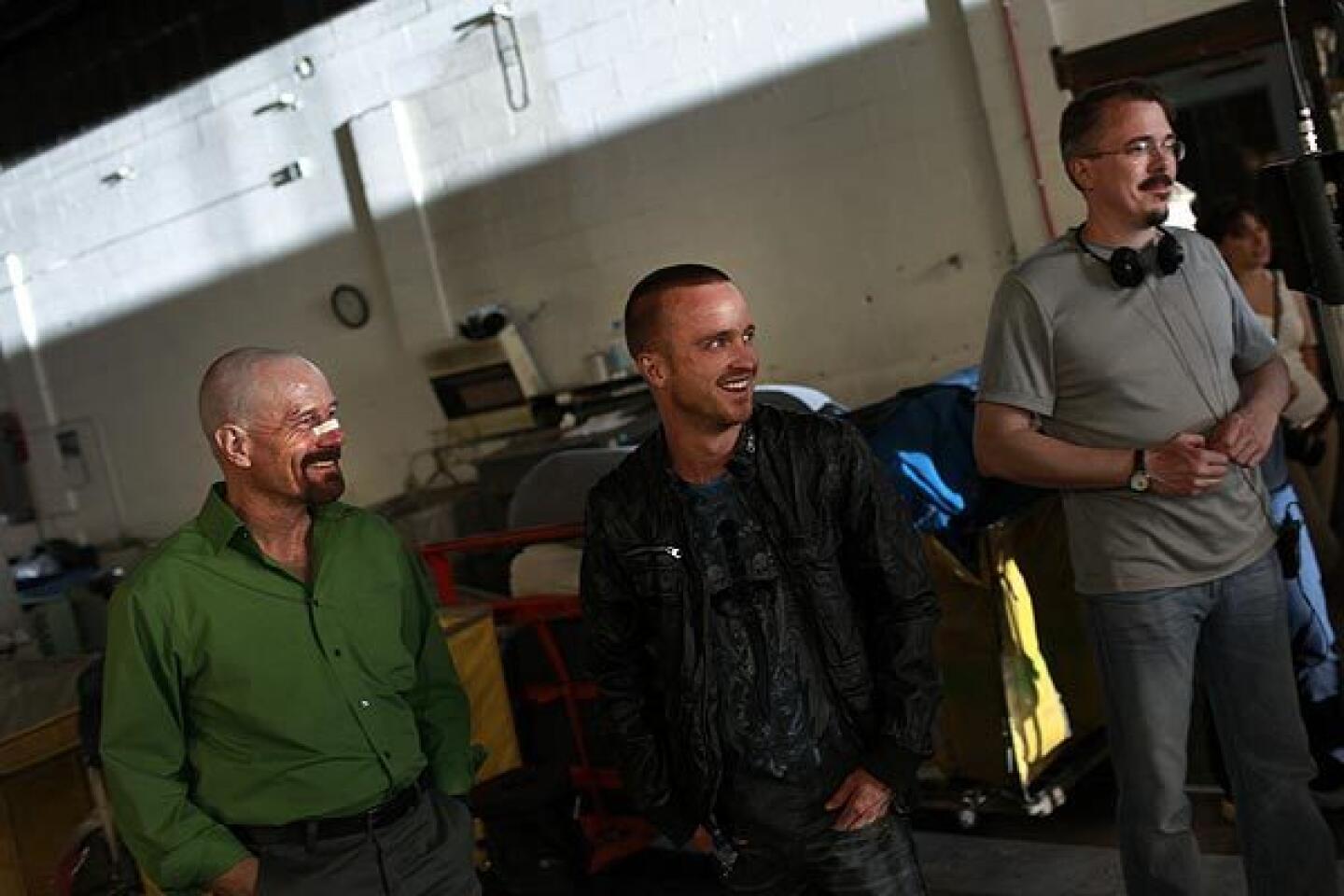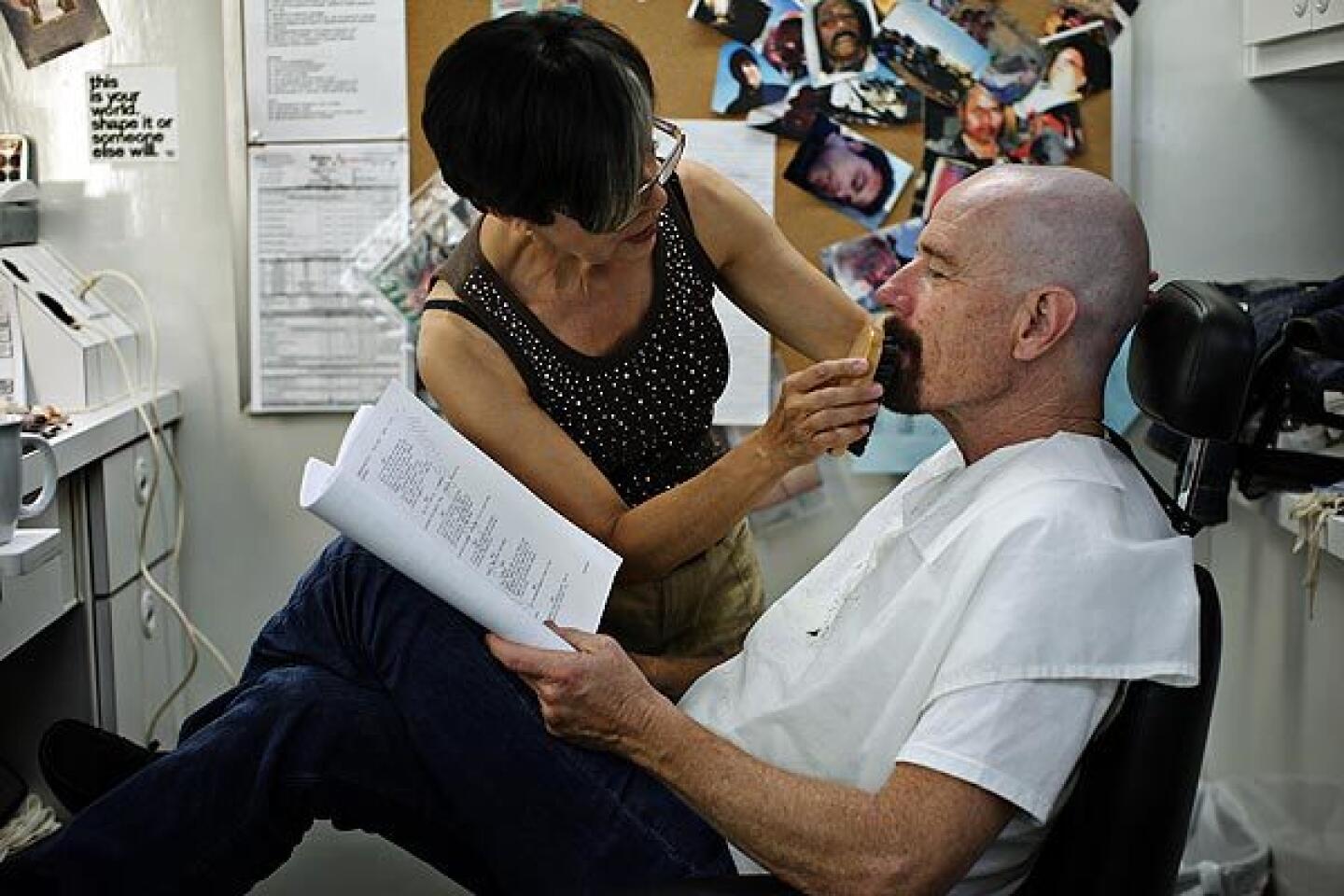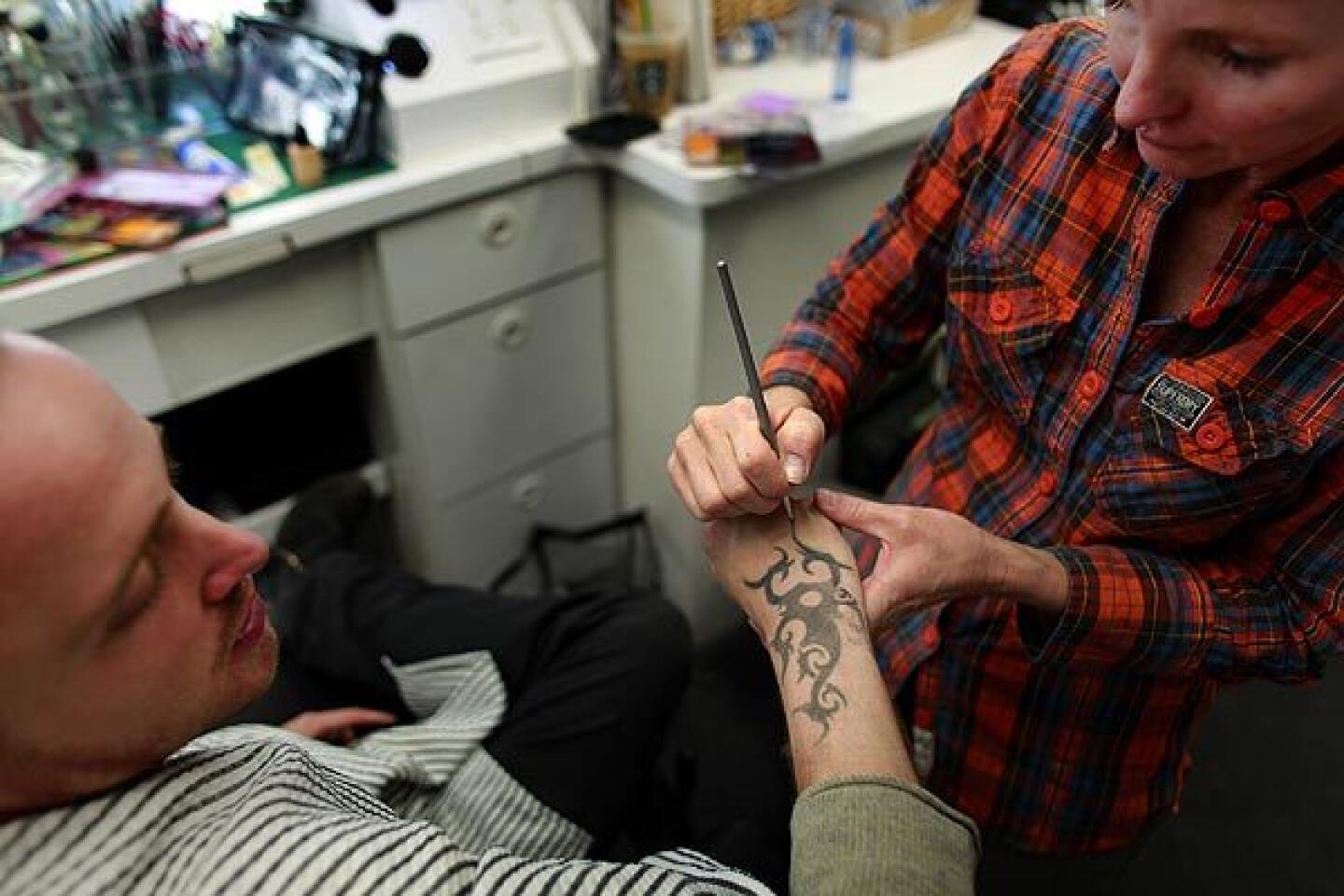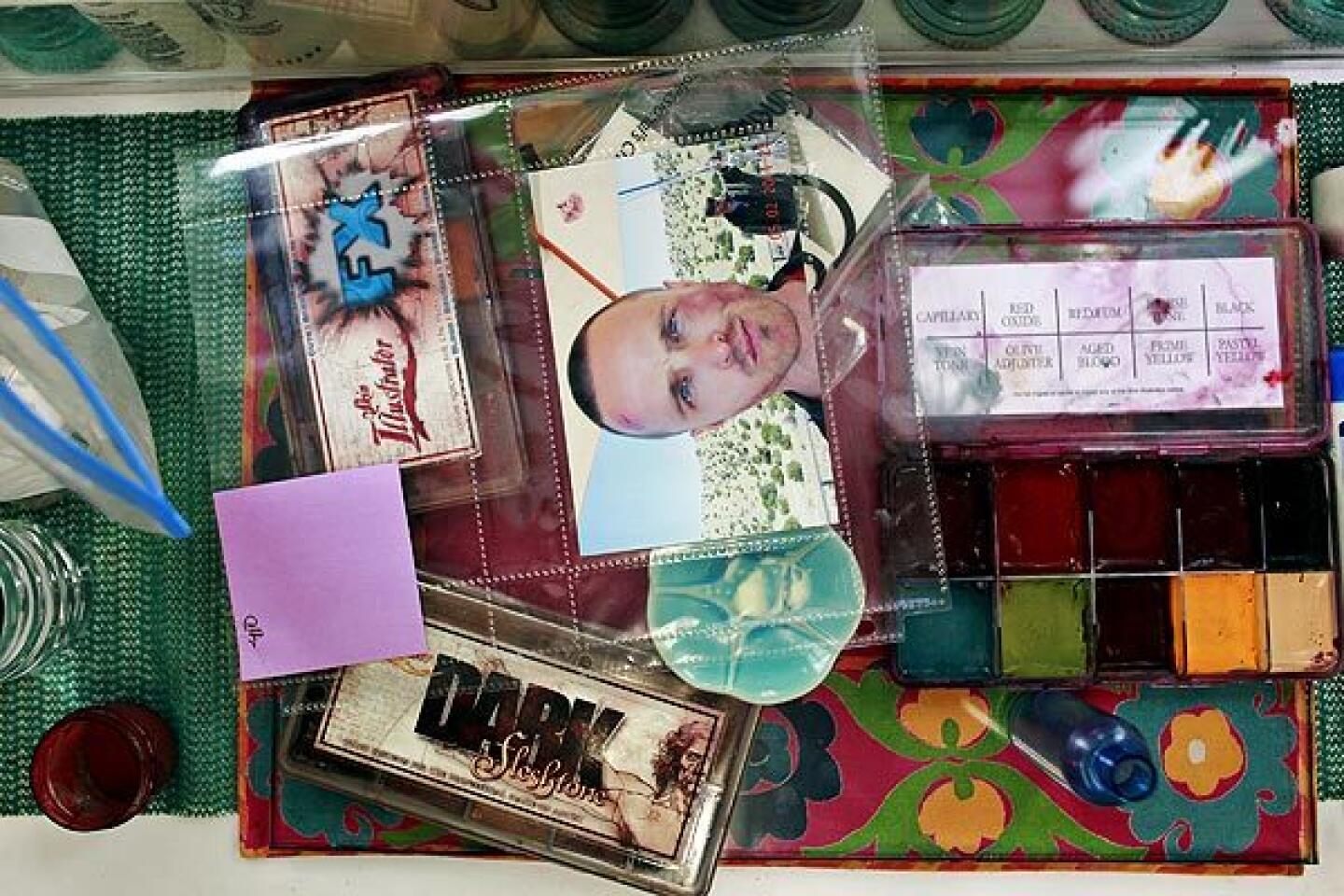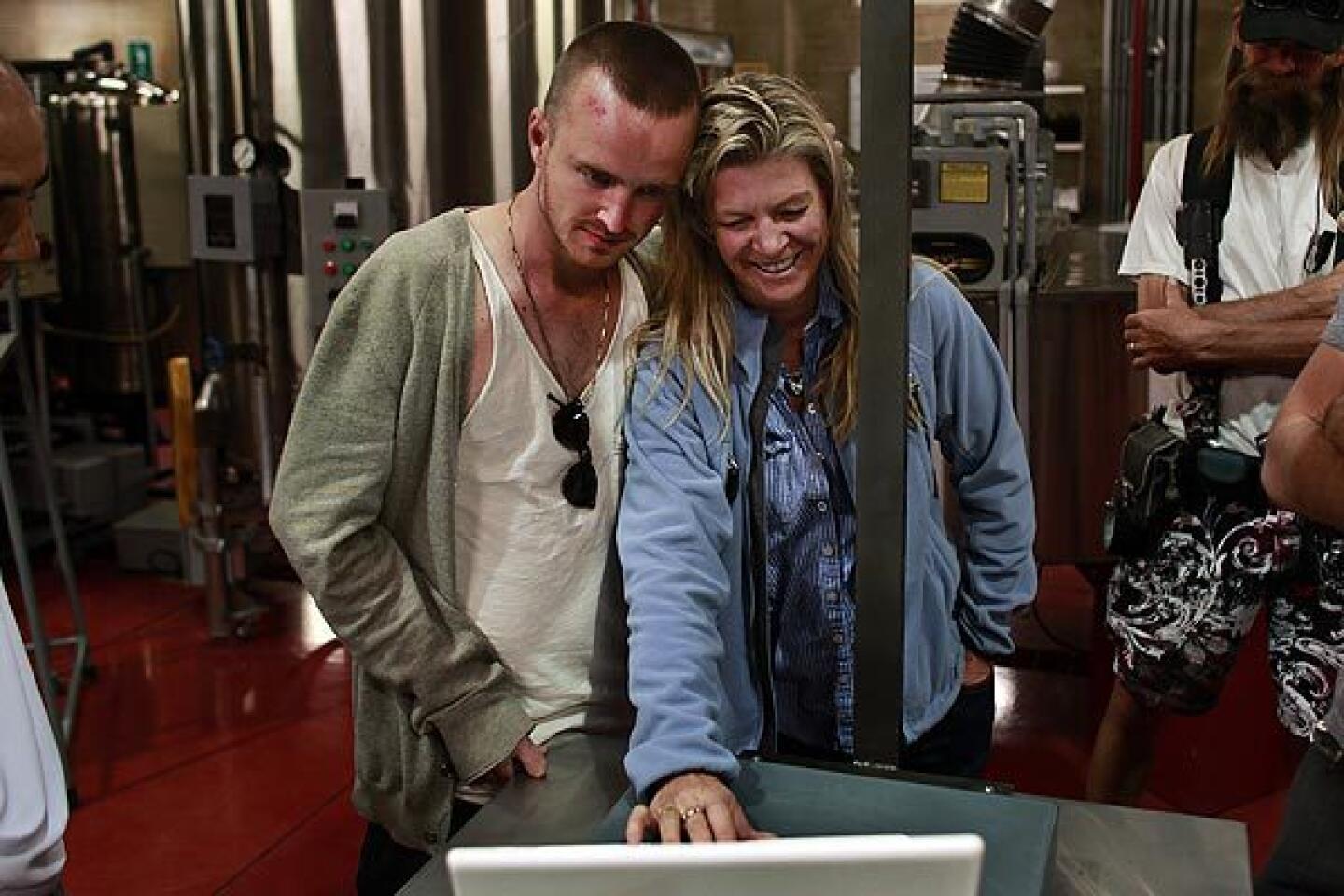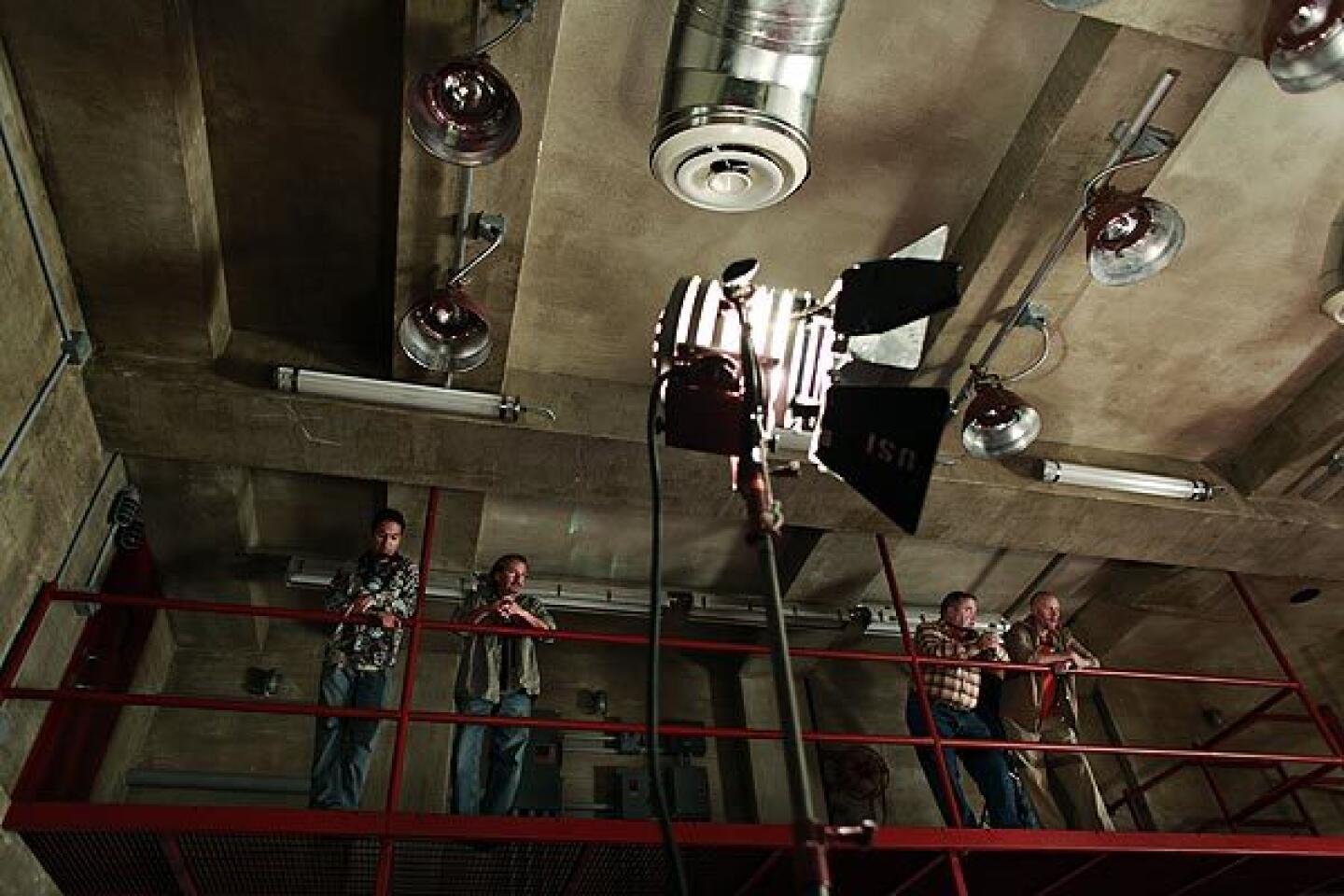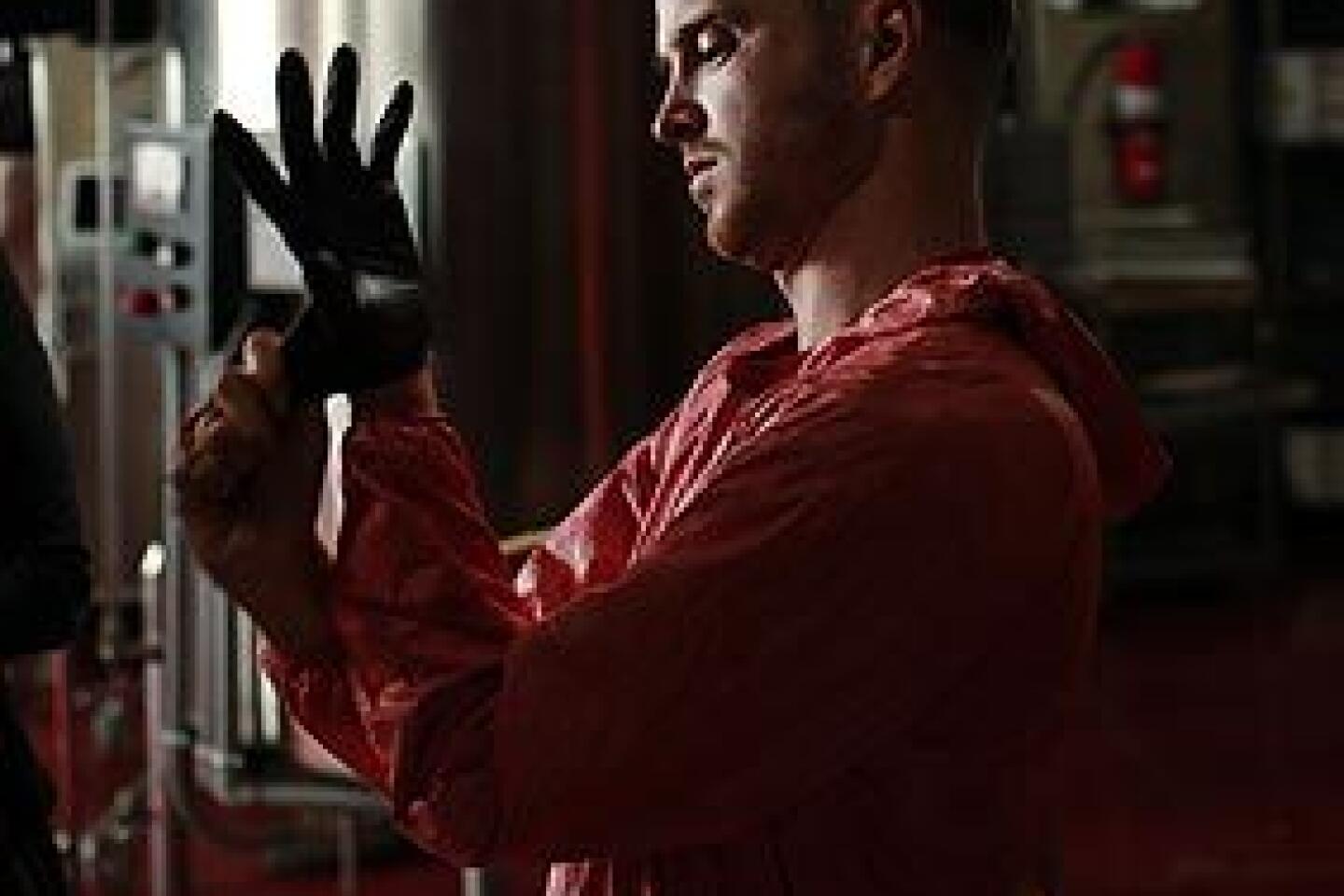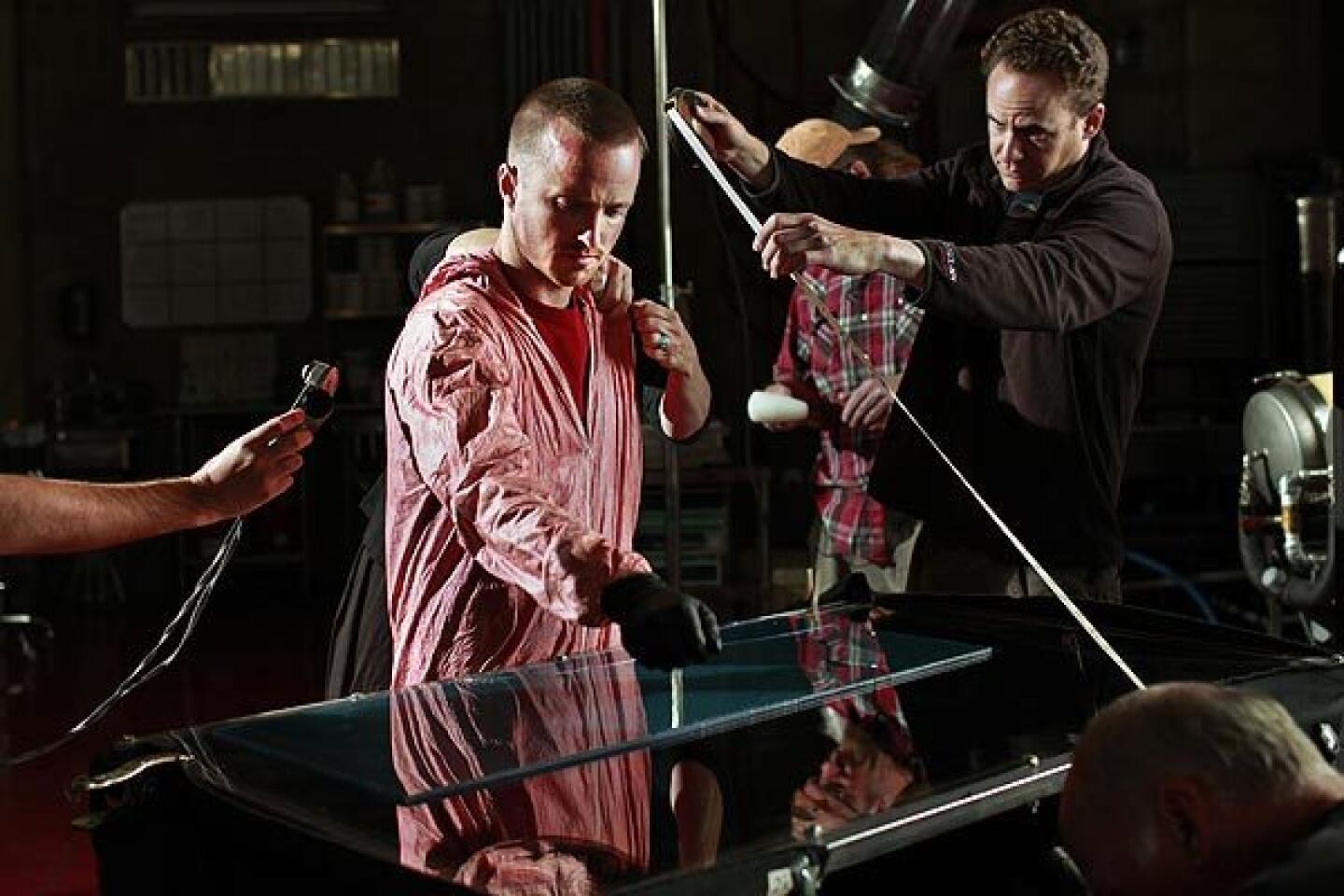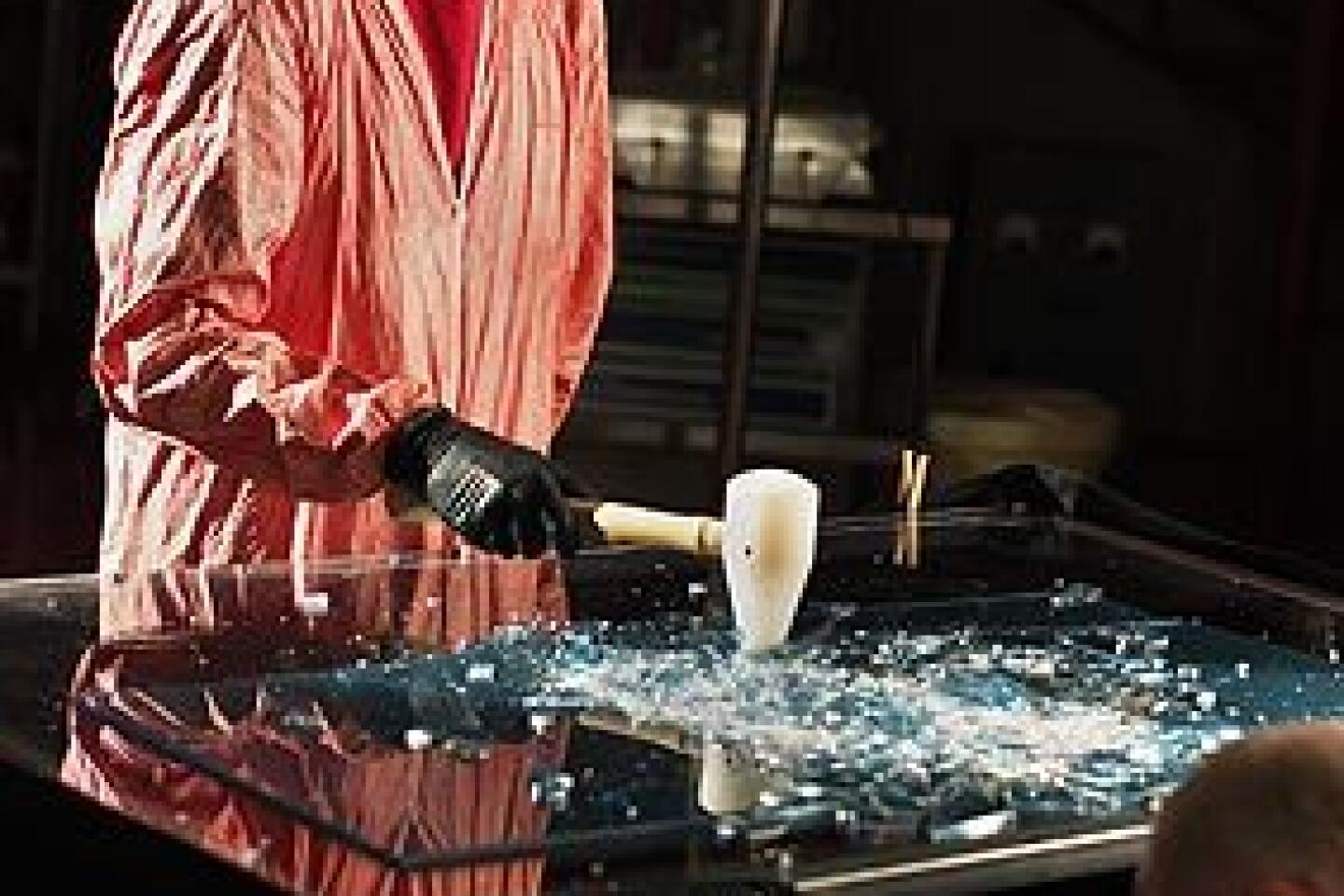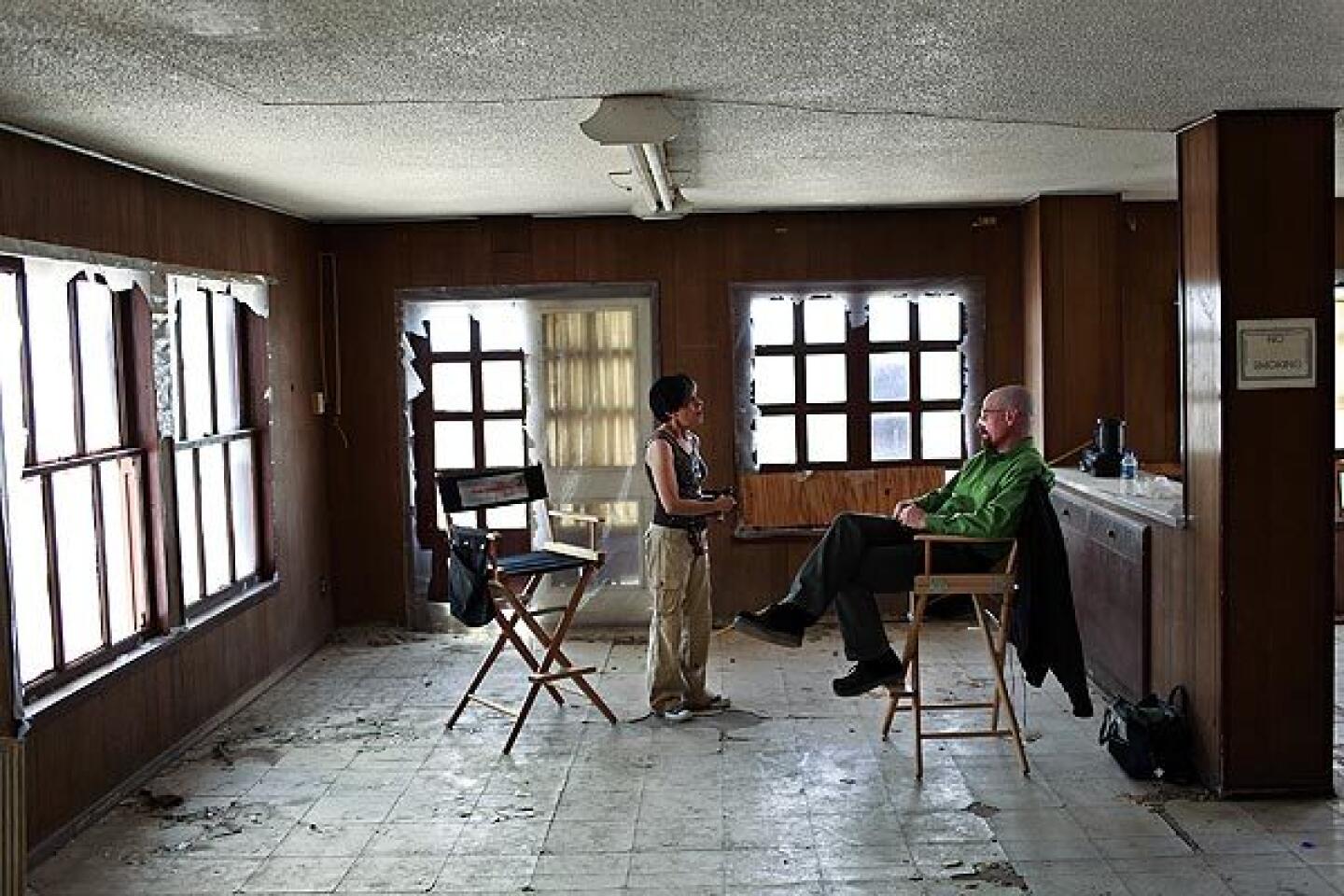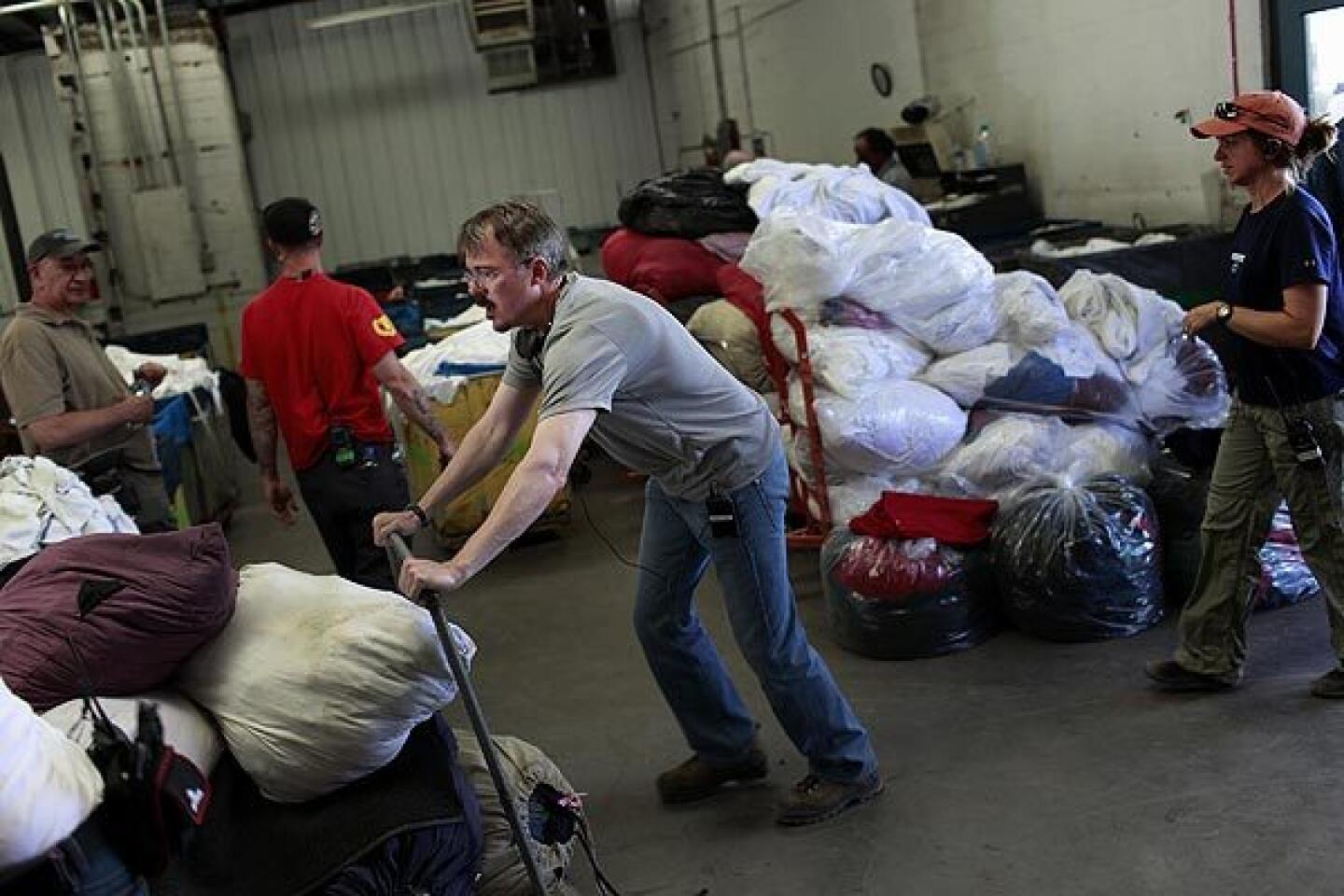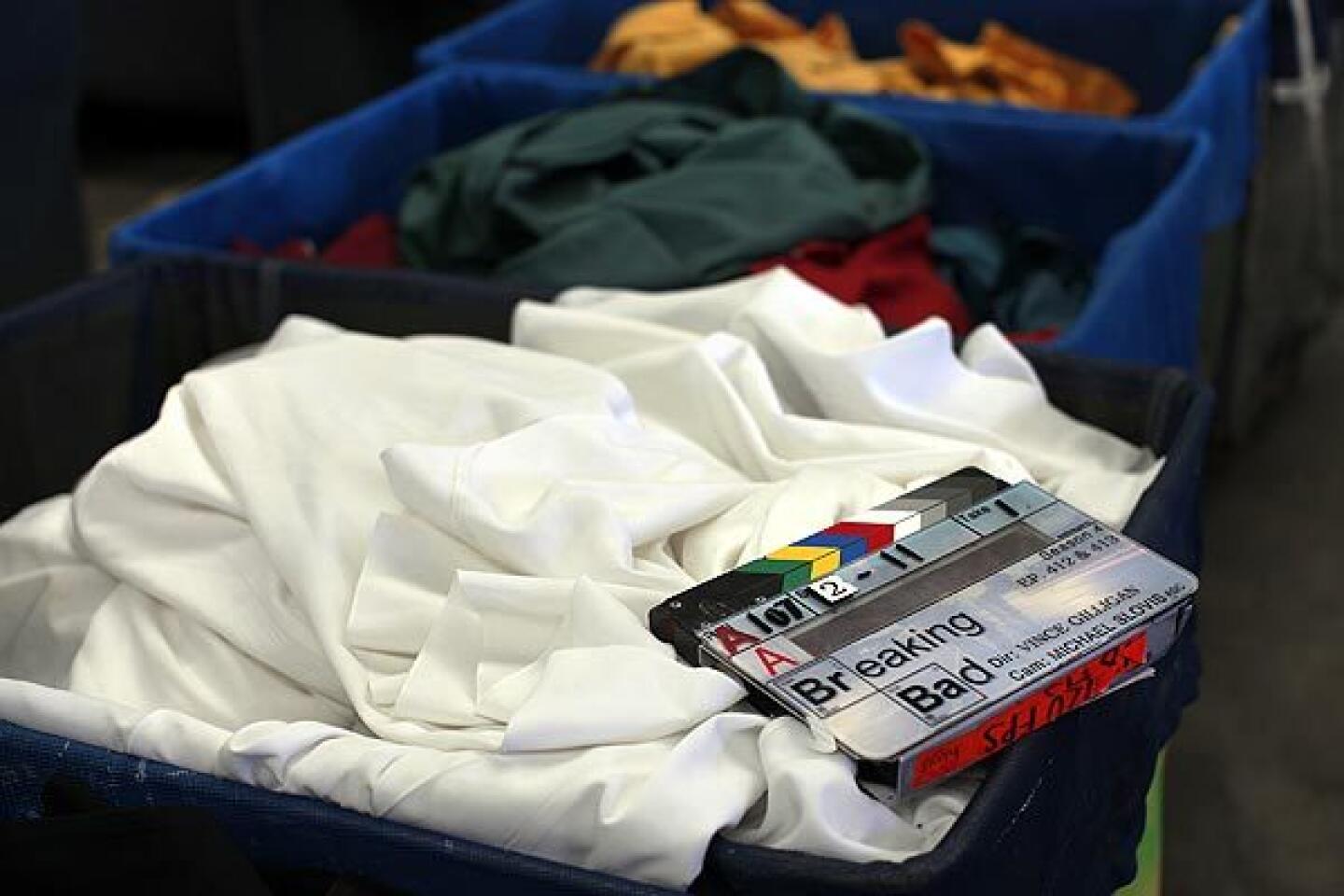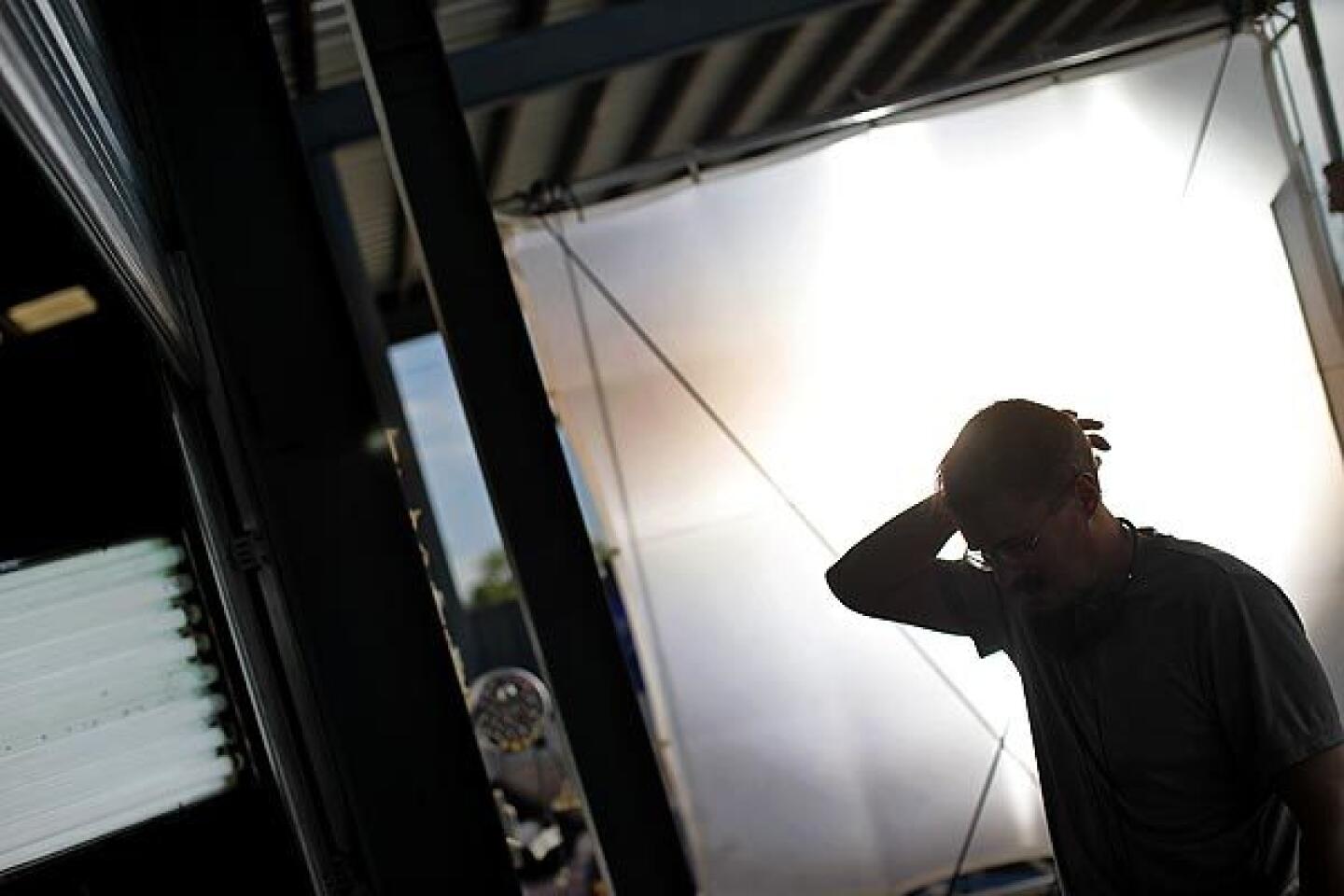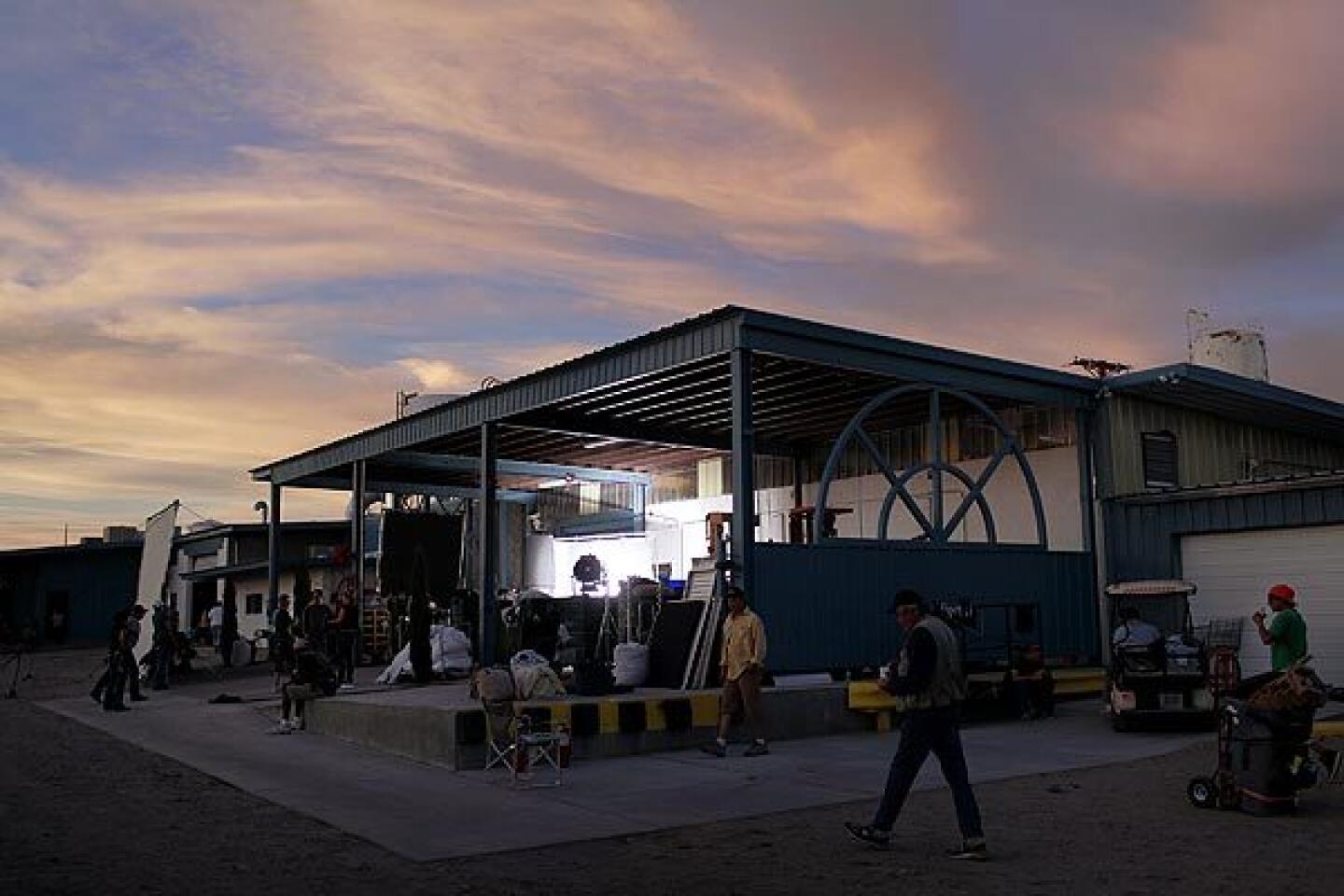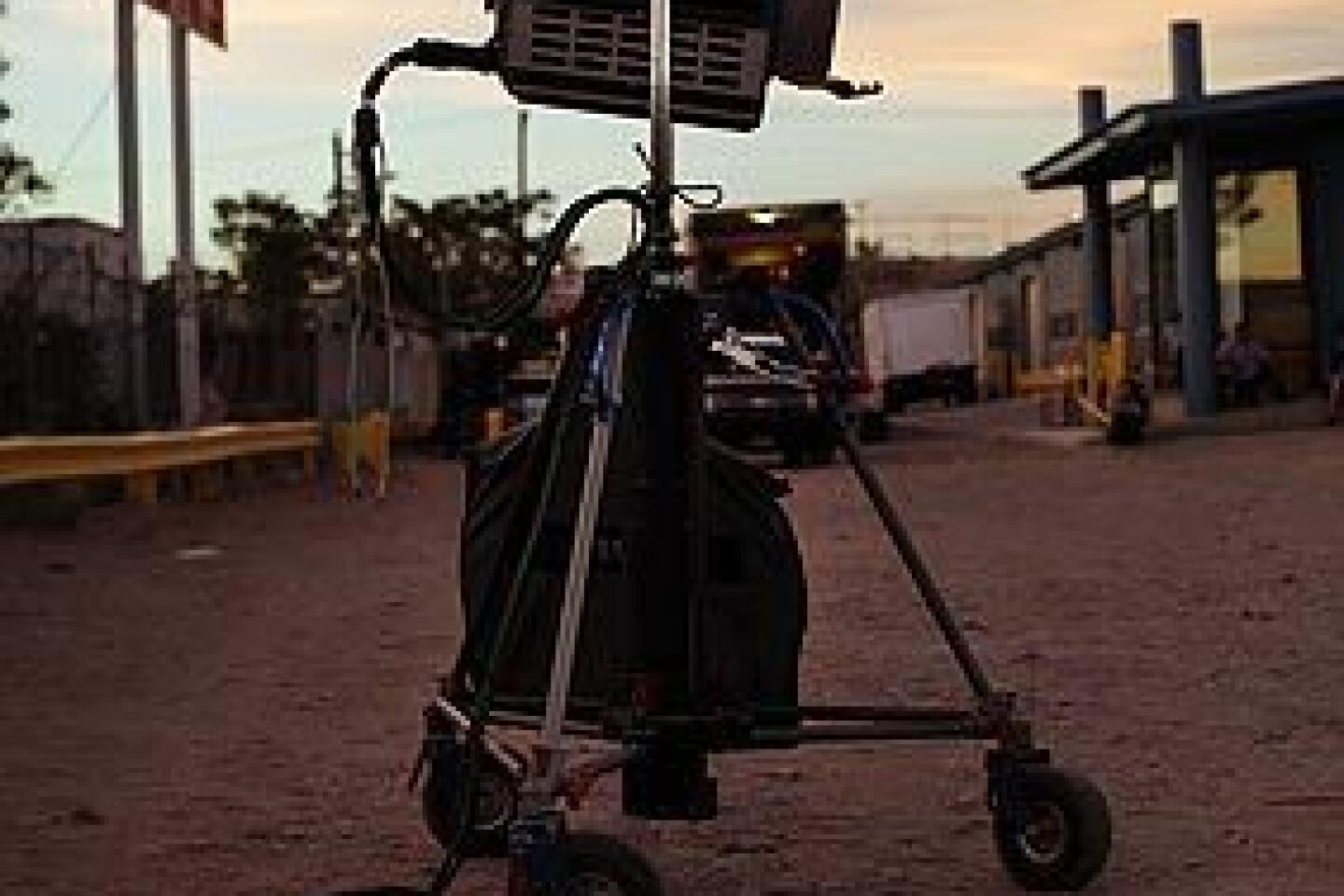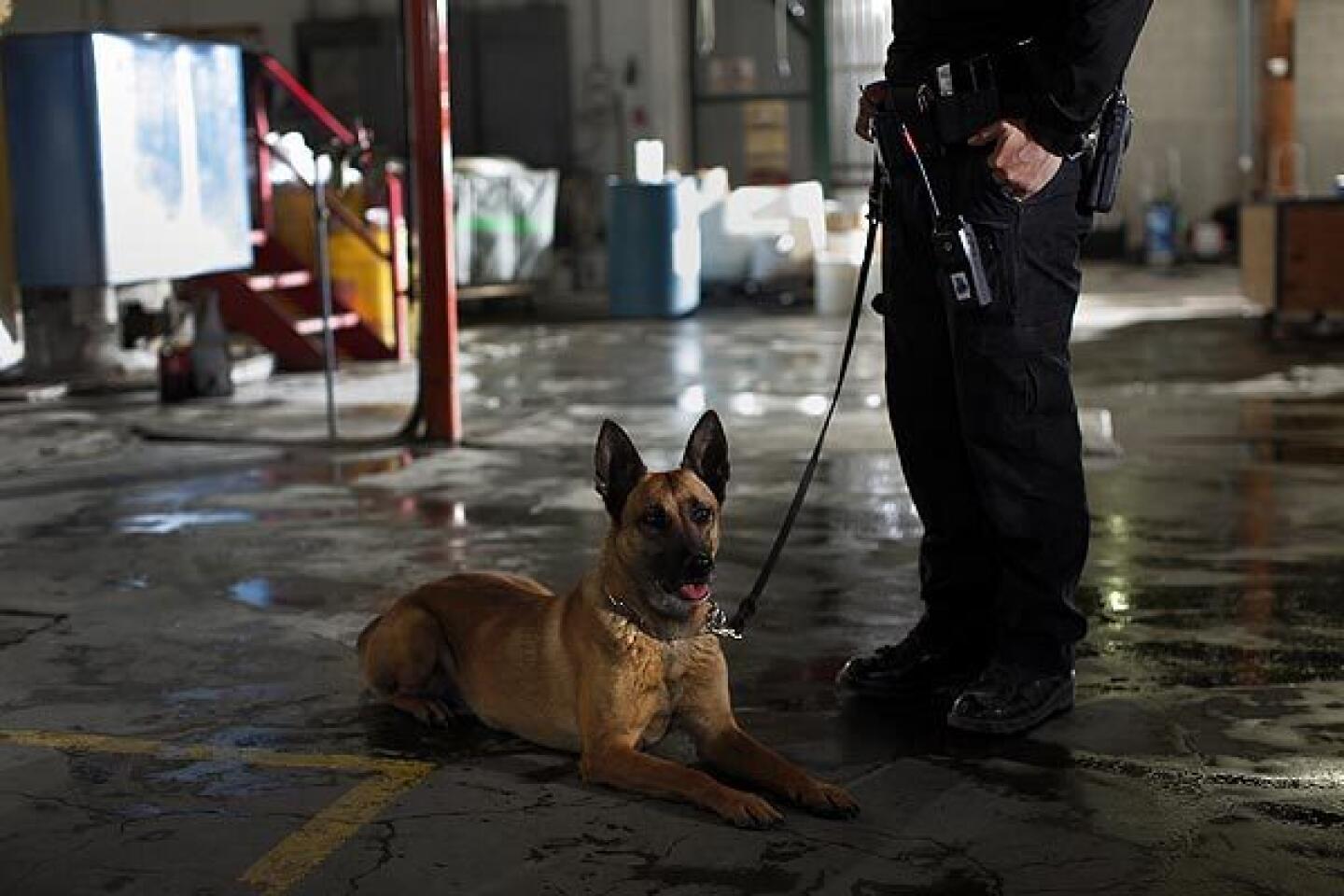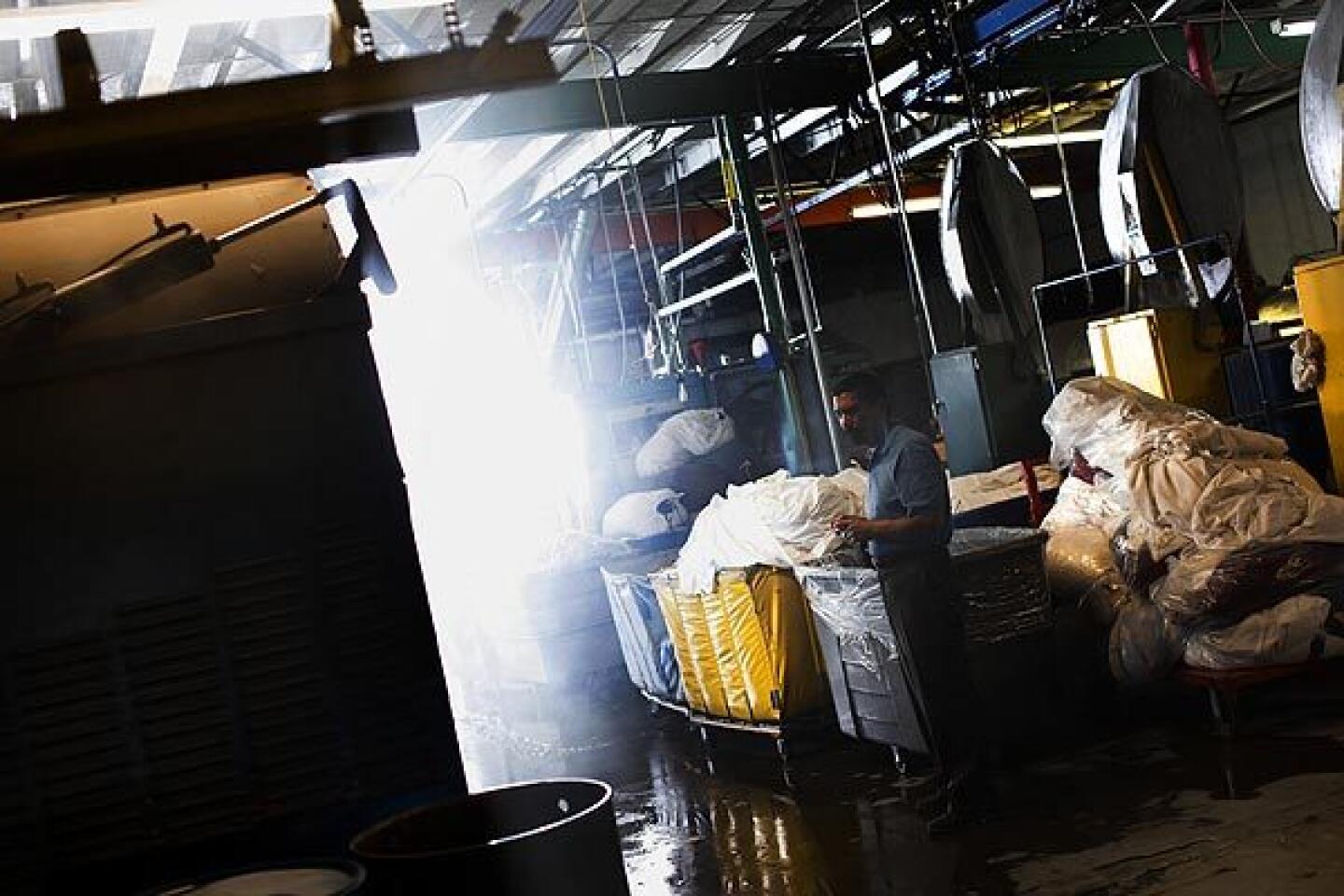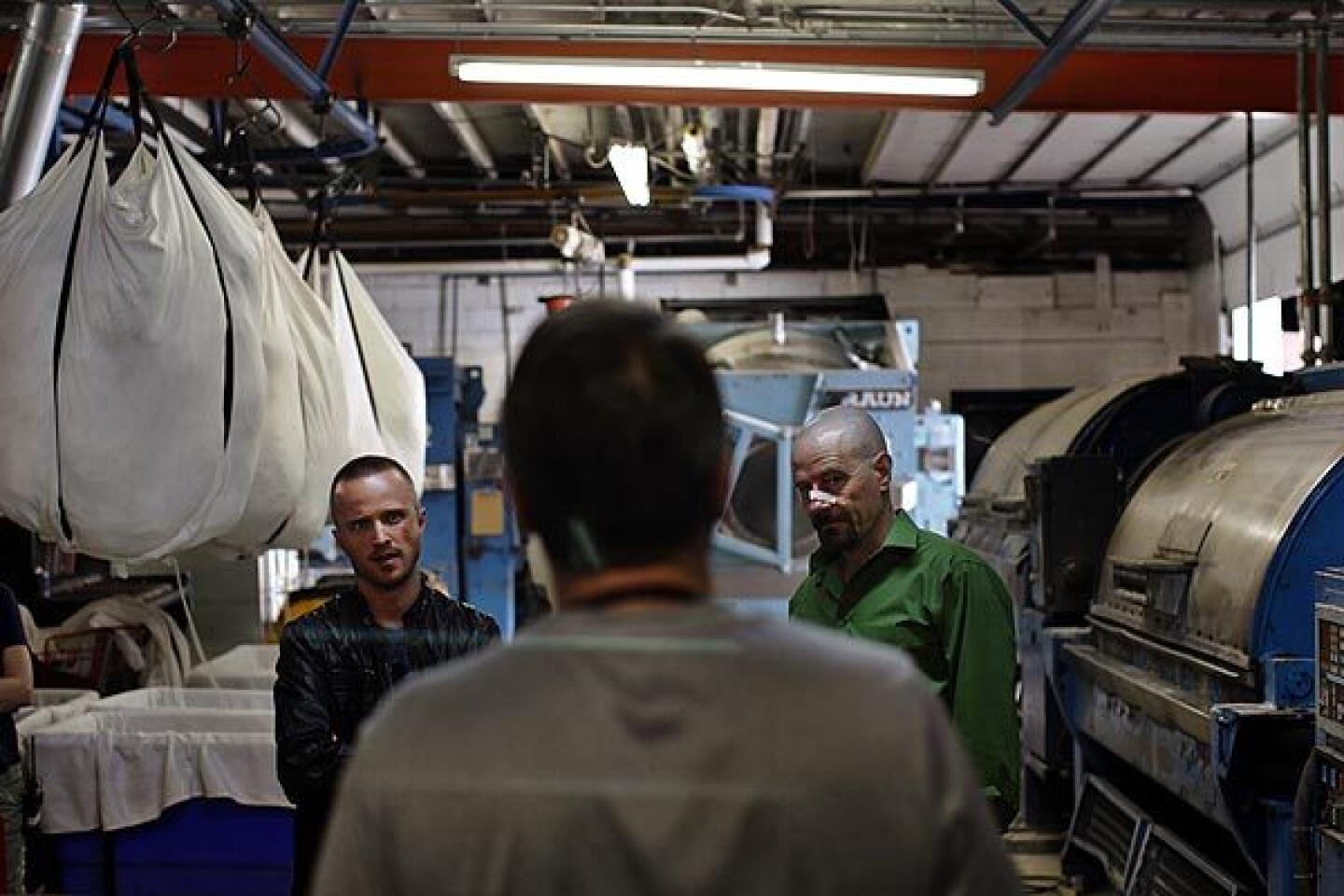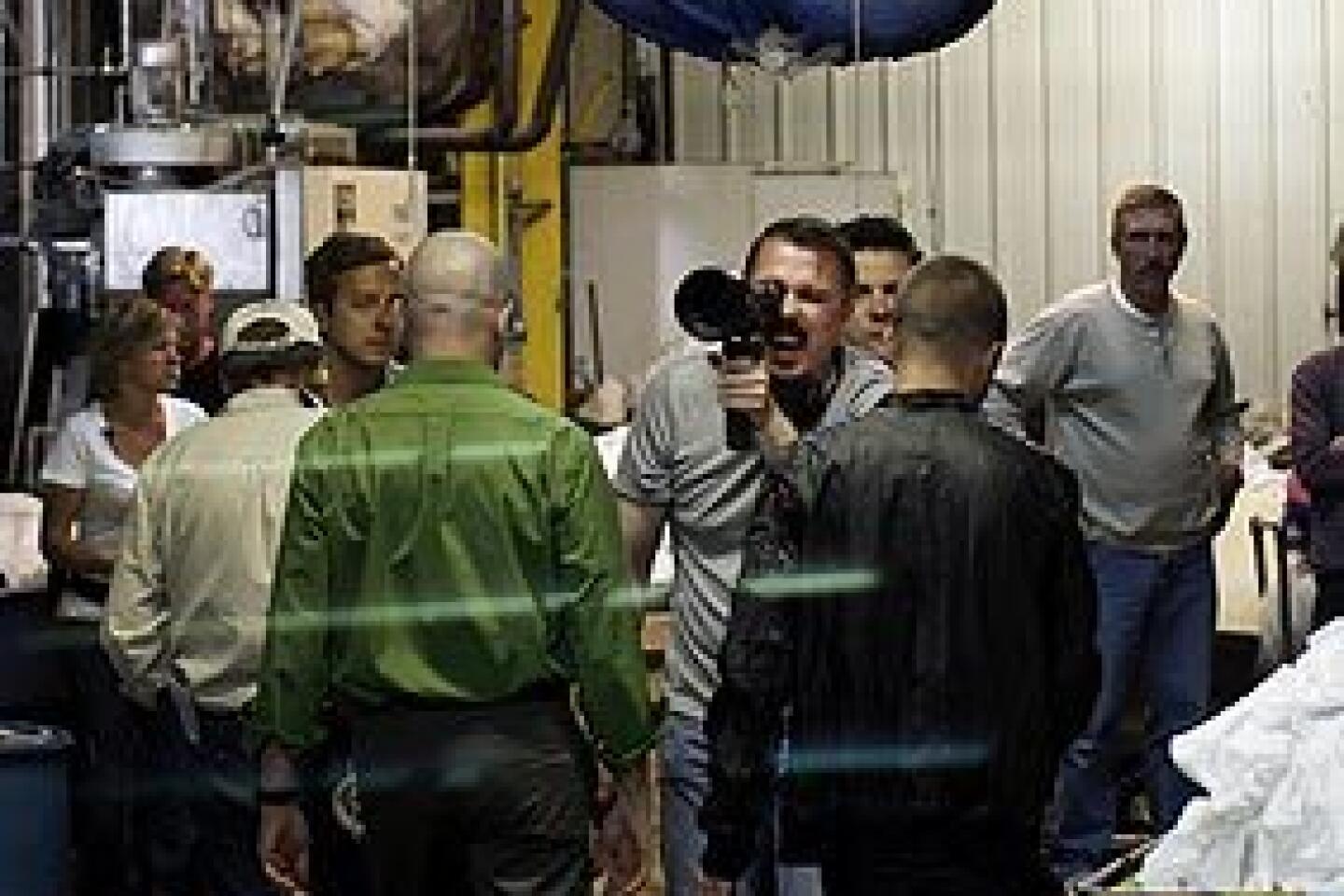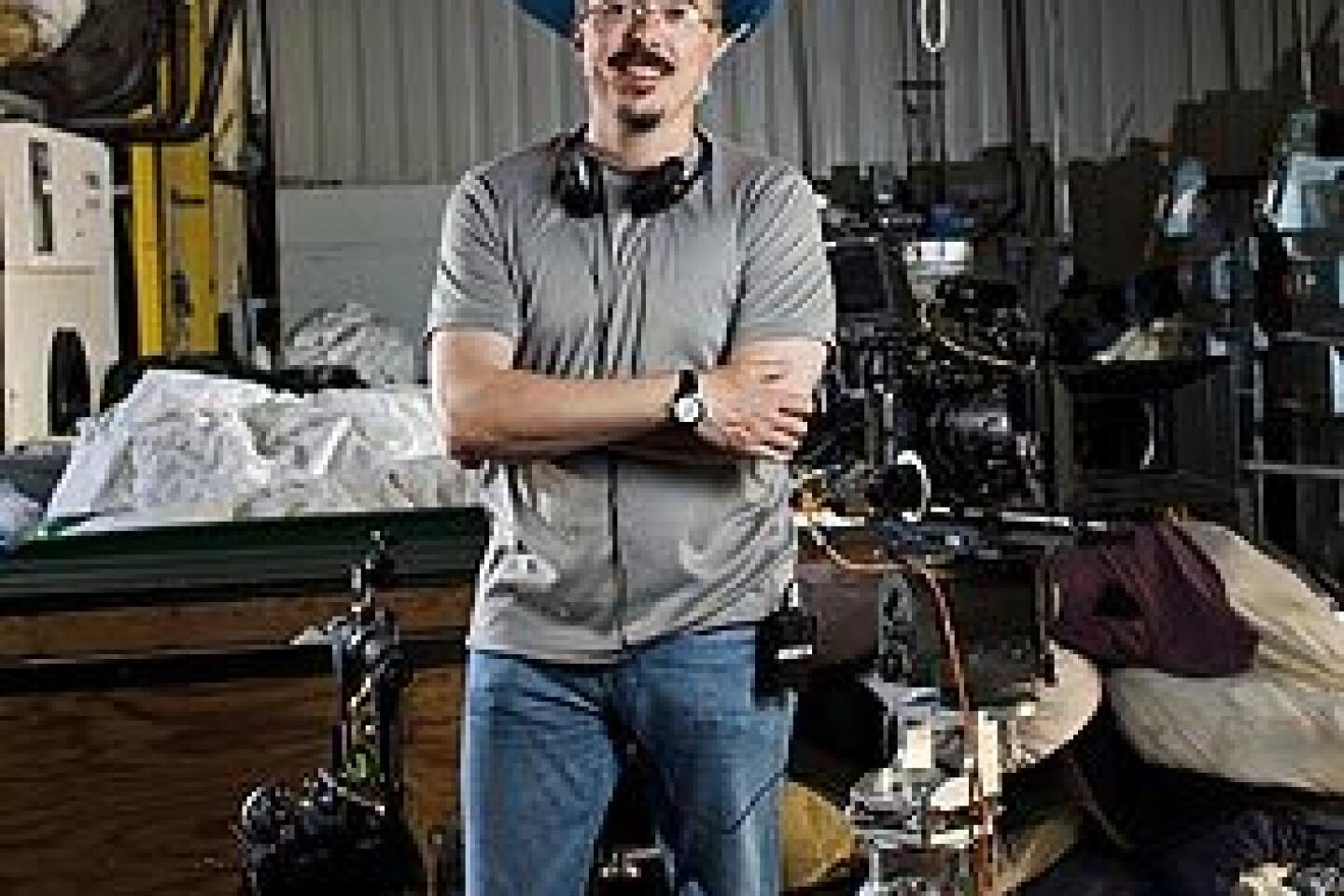‘Breaking Bad’ recap: Walter’s new, old disguise
Walter White is in beige again.
In the pilot for “Breaking Bad,” creator Vince Gilligan famously put his protagonist in an endless succession of beige clothing items. He even painted the man’s Pontiac Aztek beige, all the better to underline just how little influence Walter had on the world around him. As the series continued, however, Walter’s wardrobe and world began to shift to reflect the new life he had built for himself. The colors became darker and sharper, and he stood out more from his surroundings. He might still drive a pitch-black car, but in “Blood Money,” the first episode of the second half of “Breaking Bad’s” final season, he’s back in beige.
Live video chat with ‘Breaking Bad’s’ Aaron Paul Wednesday
His cancer is also back. We find this out when Saul Goodman calls Walter to tell him that Jesse has dropped off $5 million, to be split equally between Mike’s granddaughter and the parents of the boy shot and killed by Todd after the train robbery. Naturally, this much money just turning up will be suspicious, so Saul calls Walter, who is revealed to be sitting alone, receiving drugs to help him in his chemotherapy and fight against the disease that’s returned to blight his life. It’s almost as if this episode is driving home a point I made in my review of last year’s midseason finale, “Gliding Over All”: Walter White may have defeated his enemies, and he may have made a lot of money, but he’ll never escape death. Now, he’s back in treatment and back in beige and seemingly happy about it, even if Heisenberg keeps resurfacing at inopportune moments.
Take, for instance, when Walter goes over to Hank’s house to see what’s up with his brother-in-law, who’s faking sick that he might build up a case to bring down Walter. Walter has discovered that Hank is onto him through one of those unlikely “Breaking Bad” coincidences that the show earns by pushing things several levels past where you assume it will go. Namely, Walter figured out that the copy of “Leaves of Grass” that links him to Gale Boetticher has gone missing from his bathroom, and he quickly realizes that Hank must have it. The sequence beggars belief just a bit – quick, tell me all of the reading material you have in your bathroom – but it works because Walter is soon discovering that Hank has attached a GPS tracker to the bottom of Walt’s car.
Now, there are a lot of ways Walter could play this. Indeed, even if he had never noticed what was up, there was a good chance he could have evaded Hank’s snares, simply because he really does seem to be “out” of the game for good (though we’ll see what Lydia – who wants him to come back and teach his replacements how to cook meth – has to say about that in weeks to come). Now that he knows Hank is watching him, he could pull a Gus Fring and allow the DEA to keep an eye on him, knowing that he’ll have to use different cars for any dirty work he might have to accomplish. And there’s a moment toward the end of the concluding scene with Hank where you think he just might do this, he just might walk away.
But this is Walter White. He doesn’t walk away.
PHOTOS: Dysfunctional TV families
What’s so brilliant about Bryan Cranston’s performance in this show is how clearly he can show viewers the warring impulses within Walter, the way that the old, milquetoast Walter we met when the show began does battle with the Heisenberg side of himself he unlocked when he began cooking meth. In the wake of the events of “Gliding Over All,” Walter has re-emerged triumphant, for at least a little while. But there in that scene where Walter walks away from Hank, he has a moment where Heisenberg flits across his face, and he has to turn back. He has to know. He has to get Hank to back off, because he has to be the alpha dog in every situation. This man can never leave well enough alone, and he finally pushes things too far, telling Hank to “tread lightly” when it comes to investigating him, something that surely won’t ever come back on him.
An impressive aura of finality hangs over “Blood Money,” which brings back every major character but Todd, just to show us how they’re bruised and bleeding in the wake of this last terrible year. (Heck, the episode even makes time for nearly every important dead character to hang over the proceedings as a specter weighing in.) Jesse, in particular, is like a boat taking on water, its crew about to give up trying to bail. No matter what he does, he can’t seem to get rid of the titular cash. He doesn’t want it in his house, but it’s too much money to mysteriously show up on some couple’s doorstep. Someone would ask questions. So he heads out into the night, first giving a cluster of bills to a homeless man, then tossing bands of cash out the window so they land on people’s doorsteps, an unraveling paperboy fighting through his tears.
Yet Jesse increasingly seems to be the one person who can see through Walter’s façade. When Walter goes to tell him that Mike is alive and well and will surely be able to provide for his granddaughter, Aaron Paul’s face reflects just how much Jesse wants to believe what his former mentor and father figure – notice how Walter calls him “son” at one point – is telling him, but he simply can’t, not after all the two have been through. It’s the moment when he realizes just how trapped he is, how he’s going to need to resort to unorthodox methods if he’s ever going to get the stain of these crimes (externalized via that money) out of his life.
PHOTOS: On the lot with ‘Breaking Bad’
“Blood Money” is an awful lot of setup, but it’s necessary setup, and it goes further than I expected this first of eight episodes to go. In particular, having Walter figure out that Hank’s onto him was something I thought Gilligan and his writers would sit on for a while, waiting to hatch. Yet there it is, in the concluding scene, and the episode is all the better for it. If the writers are willing to push things this far in this midseason premiere, how far might they go in the episodes to come? And even when it seems like this episode might tip over into all setup, there are those pleasing little “Breaking Bad” structural hallmarks, like the yin-yang of Hank pretending to be sick to investigate Walt while Walter is actually sick and is pretending to be well to try to blend back in with his surroundings, which will be all the better to evade capture, even if he doesn’t know it yet.
The problem is that Walter might be back in beige, but he can no longer fade into the woodwork like he once did. Camouflage is only effective if no one is looking for that which is camouflaged, and Walter long ago set aside his old identity in favor of the power he felt as Heisenberg. Now, Hank and Jesse know just where to look, and if the two of them ever traded notes (as I assume they will), the case will begin to snowball.
And even if that doesn’t happen, we know where this ends up. Walter returns to Albuquerque a little under a year later, haggard and worn and obviously worse for wear. He goes back to the gutted ruins of his old house to dig a ricin capsule out of the wall, for whom it’s meant we don’t know. His friendly neighbor lady, now knowing his true face, drops her groceries when he says a simple hello. He can put back on the guise of his old self, but it will only be that – a costume. The true reckoning will soon arrive, as it must.
ALSO:
Review: What will ‘Breaking Bad’s’ story mean?
‘Breaking Bad’ has been good to Albuquerque
‘Breaking Bad’ recap: Crystal blue persuasion
— Todd VanDerWerff
More to Read
The complete guide to home viewing
Get Screen Gab for everything about the TV shows and streaming movies everyone’s talking about.
You may occasionally receive promotional content from the Los Angeles Times.
